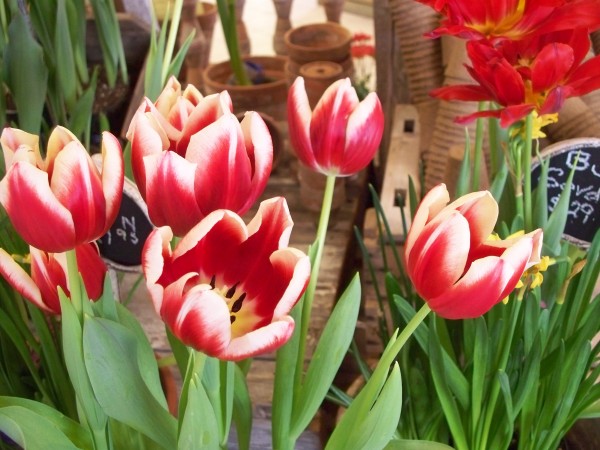|
|
Now is the time to plant spring-flowering bulb. Don't miss the fun of grouping spring-flowering daffodils, tulips, hyacinths, crocus, and other specialty bulbs. These bulbs can be planted in the fall before the frost hardens the ground, However, they will do better when they are planted early and have a chance to establish roots before the frost sets in. Spring bulbs often fail to live up to their full bloom potential due to late planting or early arrival of winter. Although tulips do fine with an October planting, other bulbs such as daffodils and hyacinths should be planted by mid-September. These bulbs are much drier, and must absorb many times their weight in water as they develop their root systems.
Colorful spring-flowering bulbs can be planted anywhere in your garden, along borders or terraces, around a fence or trees. Some bulbs such as daffodils, are lovely scattered at random for a natural look. For the most dramatic effect, plant tulips, daffodils and hyacinths in clusters of 10 or more bulbs. Use a more lavish hand with the smaller bulbs, planting them in close groupings of 25 or more.

The following key points will help insure your success with spring-flowering bulbs. Dig out the soil to the proper depth, generally three times the diameter of the bulb. If your soil is sandy you may want to go a bit deeper. In heavy soils you could go slightly shallower. When planting always condition the soil. If your soil is sandy mix in some peat moss or leaf compost. Sprinkle the bed with bone meal or a good bulb fertilizer which will aid good root development. Plant the bulbs firmly in the soil with the pointed end up. Cover the bulbs and water well. If dry spells occur during the fall, water them occasionally. Remember to mulch in the late fall with two or three inches of mulch.
<<-- Back to Petal Talk Email to a friend



